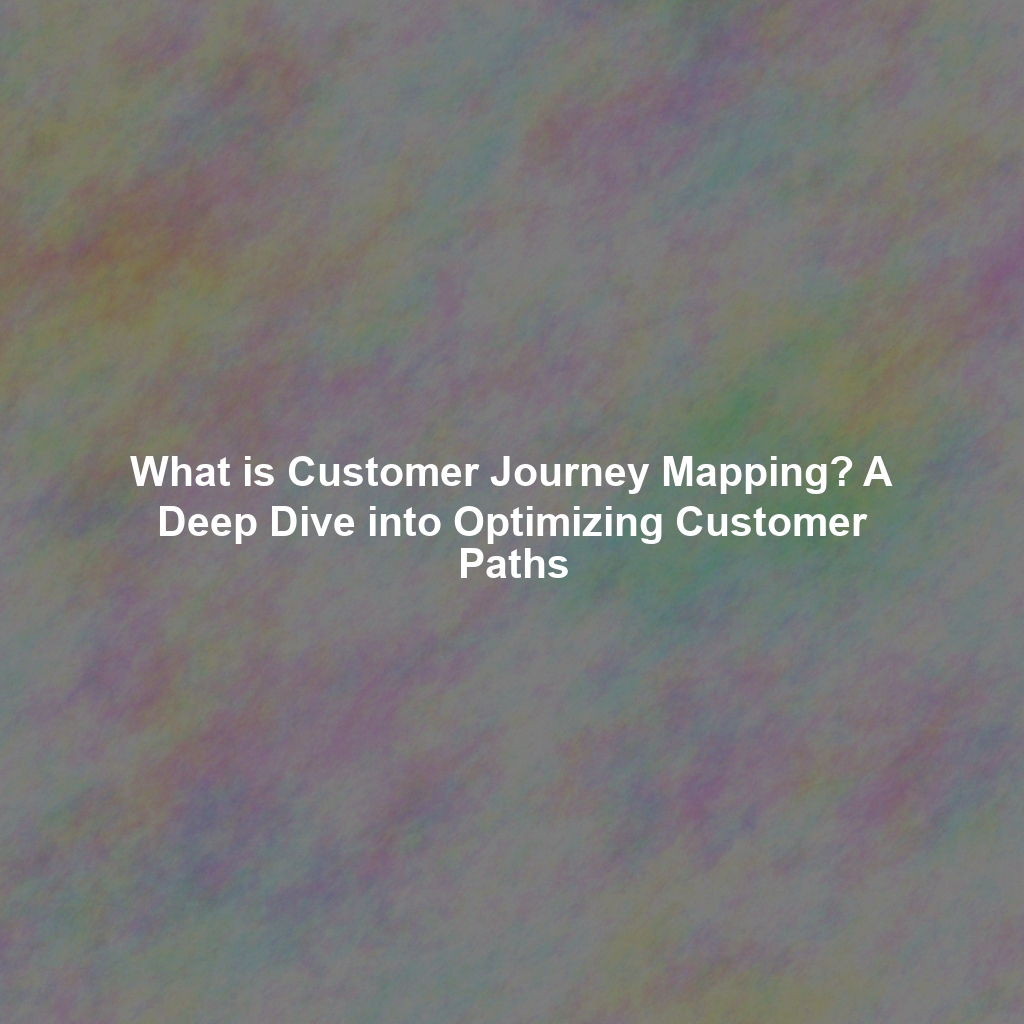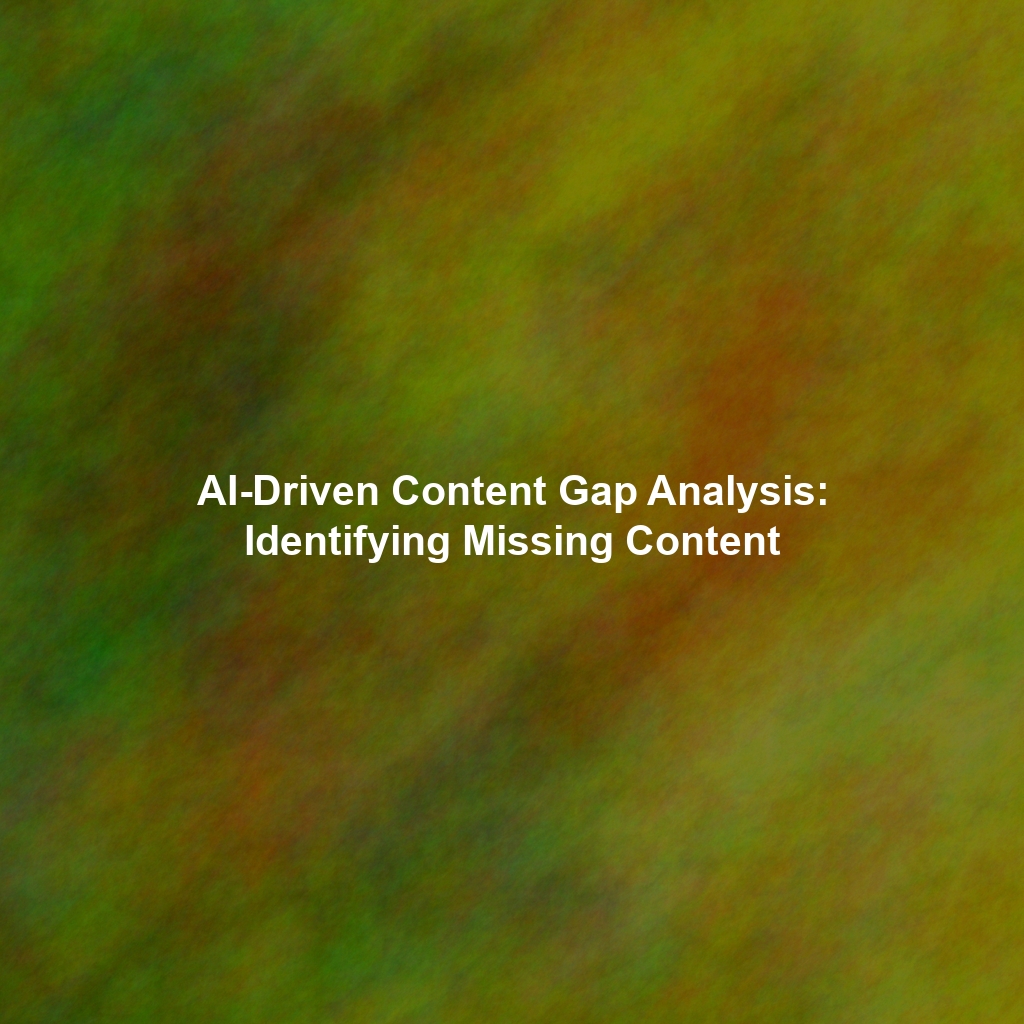Imagine you’re meticulously guiding a valued visitor through an expansive, intricate museum. You wouldn’t simply shove them through the entrance and hope they serendipitously stumble upon the most interesting exhibits, would you? Instead, you’d thoughtfully plan a coherent route, strategically highlighting key pieces, providing context, and ensuring they have a smooth, engaging, and ultimately memorable experience. That’s essentially the strategic essence of customer journey mapping – but applied to your customers and their multifaceted interactions with your brand across every touchpoint. Customer journey mapping is the visual, often highly detailed, representation of the comprehensive process a customer navigates to achieve a specific goal or solve a problem with your company. It meticulously charts their entire journey, from the initial spark of awareness of your brand or product, through the stages of consideration and decision, to the pivotal point of purchase, and critically, far beyond into the post-purchase experience. This map encompasses every single touchpoint, interaction, and emotional state along the way. This map is far more than just a pretty diagram; it’s a powerful, analytical tool that profoundly illuminates your customers’ experiences, helps to precisely identify critical pain points, uncover hidden opportunities, and ultimately empowers you to proactively optimize their path to purchase and foster long-term loyalty. Think of it as an exercise in profound empathy: putting yourself squarely in your customer’s shoes and walking a mile (or several!) in them. By deeply understanding their feelings, thoughts, motivations, and actions at each and every stage of their interaction with your brand, you can proactively address their evolving needs, anticipate their frustrations, and systematically improve their overall experience. This leads to not just satisfied customers, but enthusiastic advocates. STRATEGIC IMPERATIVE: Customer Journey Mapping shifts your perspective from internal processes to external customer reality, revealing friction points and unlocking opportunities for competitive advantage. Integrating customer journey mapping as a core component of your marketing strategy offers a plethora of profound and measurable benefits that extend across the entire organization. It’s a fundamental shift from reactive problem-solving to proactive experience design. Here are just a few of the compelling reasons why it’s indispensable: In short, customer journey mapping empowers you to move beyond merely guessing what your customers want and to start actually *knowing* what they need, when they need it, and how to deliver it effectively and efficiently. It’s a strategic framework for customer-centric growth. While the specific format and level of detail of a customer journey map can vary significantly depending on your business model, the complexity of the customer journey, and your specific objectives, most effective and actionable maps consistently share several core, indispensable components. These elements collectively paint a comprehensive picture of the customer’s experience: Every compelling journey starts with someone taking it. In customer journey mapping, that “someone” is your customer, represented by a meticulously crafted customer persona. These are fictional, yet highly detailed, representations of your ideal customers, built upon rigorous research and robust data about your existing and potential customer base. Each persona should encompass not just basic demographics (age, location, income, job role) but also rich psychographics (values, interests, lifestyle, personality traits), and critically, their key goals, motivations, pain points, and challenges specifically related to your product or service. The cardinal rule: do *not* make wild guesses; base your personas on solid, verifiable data gathered from surveys, in-depth interviews, website analytics, and CRM insights. A well-defined persona ensures the map is relevant to real people. The customer journey is rarely a single, linear step. Instead, it’s a dynamic series of distinct stages that customers typically progress through as they interact with your brand, from initial problem recognition to post-purchase advocacy. Common, widely recognized stages include: You might need to meticulously adjust, add, or remove these stages to precisely fit your specific business model, industry nuances, and observed customer behavior. For example, a SaaS company might include a distinct “Free Trial” or “Implementation” stage, while an e-commerce business might place a heavier emphasis on the “Post-Purchase Experience” and returns process. These are all the specific points of contact, both online and offline, that your customer has with your brand throughout their journey. Identifying and documenting all relevant touchpoints is absolutely crucial for understanding the complete, holistic customer experience. Examples include: your website (specific pages), social media interactions (likes, shares, comments, direct messages), email marketing campaigns (newsletters, promotional offers), phone calls with customer service, in-store visits, online reviews, advertisements (digital and traditional), product packaging, and even word-of-mouth recommendations. Missing a key touchpoint can lead to significant blind spots. At each touchpoint and stage, what specific actions are your customers taking? Are they searching for information on Google, reading product reviews on third-party sites, comparing prices on competitor websites, contacting customer support with a query, or clicking a “Buy Now” button? Understanding these precise actions helps you identify opportunities to streamline processes, remove friction, and guide customers more effectively towards their goals. This is arguably the most crucial, yet often overlooked, element of a truly insightful customer journey map. How do your customers *feel* at each stage and touchpoint of their journey? Are they frustrated by a slow-loading website, delighted by a surprisingly helpful customer service representative, confused by a complicated checkout process, or excited by a new product feature? Mapping the emotional landscape of the customer journey allows you to identify critical pain points that cause negative emotions and, conversely, pinpoint opportunities to proactively create positive, memorable experiences that foster loyalty and advocacy. These are the specific frustrations, obstacles, challenges, or negative experiences that customers encounter during their journey. Identifying these pain points with precision is absolutely crucial for improving the customer experience, reducing churn, and preventing negative brand perceptions. For example, a common pain point might be a confusing website navigation, a complicated product return process, a lack of personalized support, or slow response times from customer service. Each pain point represents a problem waiting for a solution. These are the areas where you can strategically improve the customer experience, alleviate pain points, and create more value for your customers. Opportunities are essentially the actionable solutions to the pain points you’ve meticulously identified. This could involve streamlining a cumbersome process, providing more helpful and accessible information, offering proactive personalized support, or introducing new features that directly address a customer need. Each opportunity represents a chance to delight your customer and gain a competitive edge. Now that you possess a comprehensive understanding of the key components, let’s walk through a practical, step-by-step process for creating your own insightful and actionable customer journey map. This isn’t a theoretical exercise; it’s a hands-on strategic design process: Before embarking on any mapping exercise, clearly and specifically define what you hope to achieve with your customer journey map. Are you primarily trying to improve overall customer satisfaction, increase conversion rates for a specific product, reduce customer churn in the post-purchase phase, or perhaps optimize a particular marketing campaign? Clearly articulated, measurable objectives will serve as your guiding compass, helping you focus your efforts, prioritize insights, and accurately measure your ultimate success. This is arguably the most critical and foundational step of your entire map. The accuracy and depth of your map are directly proportional to the quality of your research. Gather comprehensive data from a diverse variety of sources, ensuring a multi-faceted understanding of your customers: Based on the rich insights gathered from your research, develop detailed, data-backed customer personas that accurately represent your ideal customers. Remember to go beyond superficial details, including comprehensive demographics, deep psychographics, and, most importantly, their key goals, motivations, challenges, and specific needs related to your product or service. If you have multiple distinct customer segments, create a persona for each relevant one that will be mapped. This is the core of the mapping exercise: visually documenting the customer journey as it *currently* exists. For each identified stage of the journey, meticulously identify and plot the corresponding touchpoints, the specific actions customers take, their emotional state (positive, neutral, negative), the pain points they encounter, and any initial opportunities that become apparent. Be as detailed and granular as possible. Use visual aids such as diagrams, flowcharts, swimlane diagrams, or specialized mapping software to make the map intuitive, easy to understand, and shareable across teams. This “as-is” map is your diagnostic tool. Once you’ve meticulously mapped the current state journey, take a strategic step back to analyze it critically. Look for patterns, recurring frustrations, and unexpected detours. Identify the specific areas where the customer experience falls significantly short of expectations and prioritize the opportunities for improvement based on their potential impact and feasibility. Ask probing questions: Where are the biggest pain points causing customer churn or drop-offs? Where can you add the most value, delight customers, or remove friction? Which stages are most critical for conversion or retention? This is where you transition from diagnosis to design. Based on your thorough analysis of the current state and identified opportunities, develop a compelling vision for how the customer journey *should* ideally be. This “future state” map outlines your desired customer experience. How can you systematically eliminate the identified pain points, streamline inefficient processes, provide more helpful and timely information, or offer truly personalized support? Document the specific changes and enhancements you want to make to each stage and touchpoint of the journey to achieve this ideal state. This becomes your strategic roadmap for CX improvement. With your future state journey designed, it’s time to put your plans into action. Implement the changes and improvements you’ve identified across relevant departments and touchpoints. This might involve redesigning specific sections of your website, optimizing your customer service processes, refining your marketing automation workflows, or creating new content assets. Crucially, implement robust tracking mechanisms to measure the impact of your changes on key metrics (e.g., conversion rates, customer satisfaction scores, time to resolution for support tickets). Be prepared to iterate and refine your approach based on the real-world data you collect; continuous improvement is key. Customer journey mapping is not a one-time project that you complete and then archive. It’s an ongoing, living process that requires continuous monitoring, regular review, and periodic updates. Customer behavior, market expectations, technological capabilities, and competitive landscapes are constantly evolving, so your customer journey map needs to adapt accordingly. Regularly review your map (e.g., quarterly or annually), gather new data from all your sources, and make necessary adjustments to ensure it remains an accurate, relevant, and actionable guide for optimizing your customer experience and driving sustained business growth. Fortunately, a wide array of powerful tools and readily available templates can significantly assist you in creating, visualizing, and collaborating on your customer journey maps. These resources streamline the process and enhance the clarity of your output: In addition to these dedicated tools, a wealth of free templates are readily available online. A quick search for “customer journey map template” will yield numerous options that can provide a solid starting framework for your mapping efforts, saving you time in the initial setup phase. While the “path to purchase” is undeniably a crucial aspect of customer journey mapping, it is absolutely vital to remember that the customer’s journey with your brand does not, and should not, end at the point of sale. The post-purchase experience is just as, if not more, important for building enduring customer loyalty, driving repeat business, and cultivating powerful brand advocacy. Neglecting this phase is a missed opportunity for sustained growth. Therefore, extend your mapping efforts to encompass the entire customer lifecycle. Consider meticulously mapping the customer journey through critical post-purchase phases such as: Mapping these extended phases will help you identify additional opportunities to create a truly exceptional, end-to-end customer experience that not only keeps customers coming back for more but also transforms them into powerful, organic promoters of your brand. Customer journey mapping is not just a theoretical exercise; it is a powerful, actionable tool that can fundamentally transform your marketing strategy, drive significant business results, and foster unparalleled customer loyalty. By systematically understanding your customer’s experience from their perspective, meticulously identifying every pain point and moment of delight, and proactively optimizing their entire path to purchase and beyond, you can create a more satisfying, rewarding, and ultimately profitable experience for your customers. This strategic investment will not only lead to increased conversions, higher revenue, and reduced churn but will also cultivate greater customer loyalty and powerful brand advocacy, turning satisfied buyers into enthusiastic promoters. So, take the crucial time and dedicate the necessary resources to map your customer’s journey. It’s an investment in empathy, efficiency, and long-term sustainable growth that will undoubtedly pay off handsomely in the long run. Begin your mapping journey today, and watch your customer relationships, and your bottom line, flourish.Why is Customer Journey Mapping Indispensable for Your Marketing Strategy?
The Key Components of a Customer Journey Map: Building Blocks of Insight
How to Create a Customer Journey Map: A Step-by-Step Guide to Strategic Design
Step 1: Define Your Objectives with Precision
Step 2: Conduct Thorough Customer Research – The Foundation of Authenticity
Step 3: Create Your Data-Backed Customer Personas
Step 4: Map the Current State Journey – The “As-Is” Experience
Step 5: Analyze Your Map and Identify Areas for Improvement – The Diagnostic Phase
Step 6: Create Your Future State Journey – Designing the “To-Be” Experience
Step 7: Implement Your Changes and Measure Impact – The Execution Phase
Step 8: Continuously Monitor and Update Your Map – The Ongoing Evolution
Tools and Templates for Customer Journey Mapping: Facilitating the Process
Customer Journey Mapping: Beyond the Purchase – Fostering Long-Term Loyalty
Conclusion: Start Mapping Your Way to Strategic Success and Customer Delight
What is Customer Journey Mapping? A Deep Dive into Optimizing Customer Paths

 Skip to content
Skip to content
